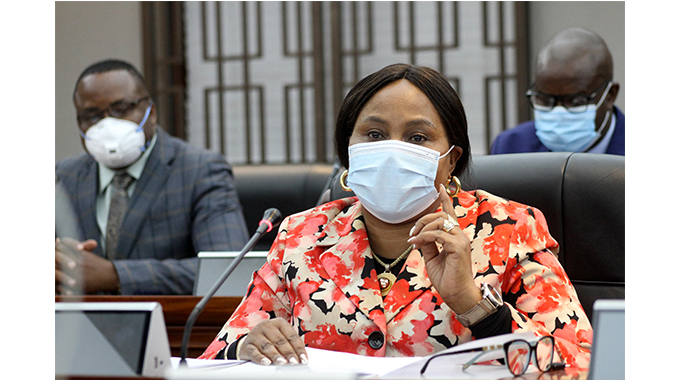Winter wheat inputs distribution begins

Mashudu Netsianda, Senior Reporter
GOVERNMENT has availed 68 184 hectares of land for the coming winter cropping season as the country seeks to meet its target of 340 000 tonnes of wheat.
The largest single harvest in history was in 1990 when 325 000 tonnes were harvested.
The targeted tonnage is expected to meet national requirements and rule out imports.
As the world reels from increased hunger among populations due to Covid-19 related restrictions, the Second Republic has planned ahead for food security for Zimbabweans.
The original target for planting wheat was 75 000 hectares for three schemes which support production, namely: CBZ Agro-Yield, Food Crop Contractors and Presidential Wheat Support Scheme, compared to a total of 44 600 hectares which were contracted for the whole season last year.
The ongoing contracting of farmers has been enhanced by the use of information communication technologies, starting with the provision of electronic gadgets to extension staff.
Government through the Agriculture and Food Systems Transformation Strategy and the Accelerated Irrigation Rehabilitation and Development Plan targets to put 350 000ha under irrigation in the next three seasons to climate-proof agriculture as the country is predicted to become drier in the decades ahead.
In her post-Cabinet briefing on Tuesday, Information, Publicity and Broadcasting Services Minister Monica Mutsvangwa said Cabinet had approved an update on preparations for this year’s wheat production presented by the Minister of Lands, Agriculture, Fisheries, Water and Rural Resettlement, Dr Anxious Masuka.
“The nation is advised that out of the original target of 75 000 hectares for planting wheat, 68 184 hectares are now available for the three schemes which support production, namely: CBZ Agro-Yield, Food Crop Contractors and Presidential Wheat Support Scheme, compared to a total of 44 600 hectares which were contracted for the whole season last year,” she said.
“The ongoing contracting of farmers has been enhanced by the use of information communication technologies, starting with the provision of electronic gadgets to extension staff.”
Minister Mutsvangwa said the provision of inputs is better than in previous seasons, with all inputs for the private sector contracted hectarage having been secured and distribution in progress.
She said the 27 000 metric tonnes of basal fertiliser, 25 999 metric tonnes of top dressing fertiliser and 7 450 metric tonnes of wheat seeds required for the CBZ Agro-Yield programme are available.
Already, 3 302 metric tonnes of basal fertiliser and 2 783 metric tonnes of top dressing have been distributed.
“For the Presidential Winter Wheat Scheme, seed and fertiliser supply contracts for the 10 000 hectares are being processed,” said Minister Mutsvangwa.
Last season, farmers produced wheat that is enough to cover nine months’ supply to meet domestic demand, a major jump, with the Grain Marketing Board receiving 156 144 tonnes from the farmers it had under contract and around 95 000 tonnes grown by the rest of the wheat farmers to give a total harvest of over 250 000 tonnes.
In terms of electricity and water supply, Minister Mutsvangwa assured the nation that there were sufficient supplies to meet planting requirements, with the water level in Kariba having doubled compared to the same period last year.
The Zimbabwe National Water Authority (Zinwa) has indicated that major dams have water capable of irrigating more than 230 000 hectares.
“A high-level key stakeholders taskforce has been established to ensure availability of these critical enablers, and the Zimbabwe National Water Authority has already held a successful stakeholders meeting ahead of the winter season,” said Minister Mutsvangwa.
“Accordingly, a better season is expected, supported by a robust monitoring and evaluation framework, capacitated extension officers, and supplemented by weekly meetings of contractors and Government.”
Speaking during a recent Wheat Indaba organised by Zinwa, Dr Masuka said there was excitement over this year’s winter cropping season which comes after good rains filled dams.
“This is the second-best season in 51 years, since 1970. Lake Tugwi-Mukosi spilled for the first time since commissioning in 2017, while the second largest, Lake Mutirikwi, has surpassed the 95 percent mark. Dams in all seven catchments are at an average 92 percent full,” he said.
Zinwa director for water supply operation Engineer Admire Mare said inflows into the irrigation dams boosted the potential for irrigation.
He said major dams can support a potential hectarage of 184, 582 hectares. Small dams and private water sources can support 46 356ha giving a total of 230 938 ha.
Cabinet also adopted the 2021 Second Round Crop and Livestock Assessment Report.
According to the report, maize production is estimated at 2 717 171 metric tonnes, which is 199 percent more than the 907 628 metric tonnes produced last season.
Traditional grains production is projected at 347 968 metric tonnes, which is 128 percent more than the 152 515 metric tonnes produced last year.
“The total cereal production projection is 3 075 538 metric tonnes, against a national cereal requirement of 1 797 435 metric tonnes for human consumption and 450 000 metric tonnes for livestock,” said Minister Mutsvangwa.
Cotton production is estimated at 195 991 metric tonnes, a 94 percent increase from the 101 000 metric tonnes recorded last year.
Tobacco production is estimated to increase by eight percent to 200 245 tonnes from 184 042 tonnes while the harvest for soya bean is expected to increase by 51 percent to 71 290 metric tonnes from 47 088 metric tonnes last year.-@mashnets












Comments